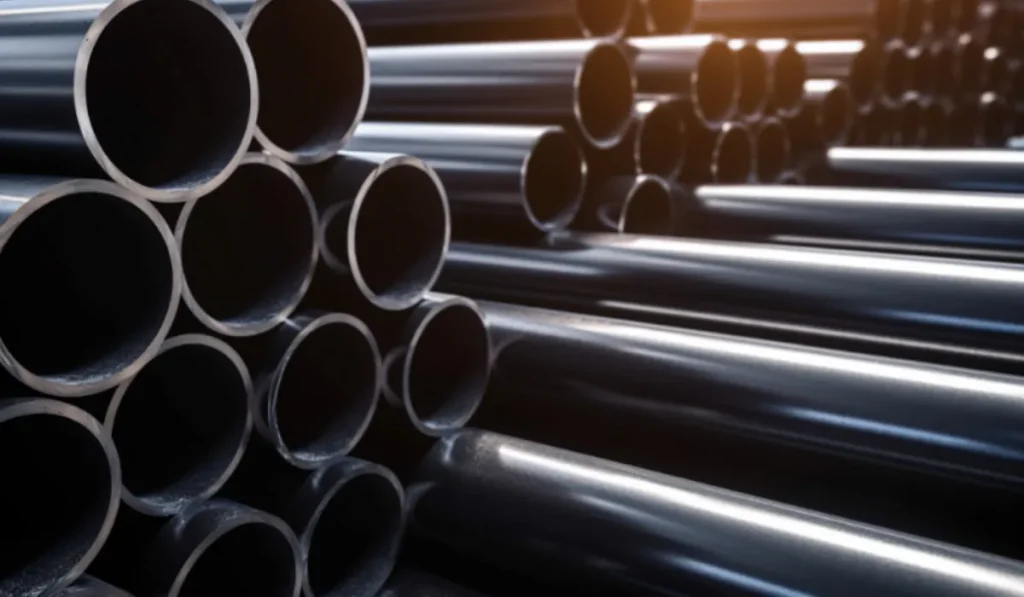Steel weighs approximately 0.283 pounds per cubic inch. This equates to about 7.85 grams per cubic centimeter.
Understanding the weight of steel is crucial for industries ranging from construction to transportation, where precision is key for both safety and efficiency.
The density of steel varies somewhat based on its composition and heat treatment, but this figure provides a standard reference point.
Engineers, architects, and builders often calculate the weight of steel to determine support structures and material requirements.
For hobbyists and DIY enthusiasts, knowing the weight per unit volume aids in crafting projects with appropriate support and stability.
This metric also assists logistics professionals in planning for transportation and load-bearing capacities.
Accurate knowledge of steel’s weight per cubic inch helps ensure the integrity of various projects, whether they involve large-scale constructions or intricate designs.
The Density Of Steel
Digging into the world of metals, steel stands out for its strength and versatility. Understanding steel’s weight per cubic inch is vital for industries and projects. T
his weight is a direct result of steel’s density.
Common Steel Grades And Their Densities
Different steel grades mean different densities. Here’s a quick look at common types:
| Steel Grade | Density (lb/in3) |
|---|---|
| Carbon Steel | 0.284 |
| Alloy Steel | 0.283 |
| Stainless Steel | 0.289 |
| Tool Steel | 0.282 |
These values are for general reference. Actual numbers can vary.
Factors Affecting Steel Density
Steel’s density can differ. Here’s what can change it:
- Alloy Elements: Adding elements like chromium or nickel can alter density.
- Heat Treatment: Heating and cooling steel can change its structure and density.
- Manufacturing Process: How steel is made can result in density variations.
Keep in mind, different factors mean different weight calculations for steel per cubic inch.
Calculating Steel Weight

Understanding steel weight is crucial for many construction and engineering projects.
Whether planning a build or just curious about materials, it’s important to know how to compute the weight of steel.
Below, you’ll learn how to determine steel’s weight with accuracy.
The Formula For Weight Calculation
The weight of steel is calculated using a simple formula:
Density x Volume. Steel has a density of approximately 0.283 lb/in³ (7.85 g/cm³). To find the weight, multiply this density by the object’s volume in cubic inches.
As an example, let’s calculate the weight of a steel block that is 10 inches long, 5 inches wide, and 2 inches high:
Weight = Density of Steel x (Length x Width x Height)
In numbers, it looks like this:
Weight = 0.283 lb/in³ x (10in x 5in x 2in)
- Calculate the volume: 10 x 5 x 2 = 100 in³
- Multiply by the density: 100 in³ x 0.283 lb/in³
- Result: 28.3 pounds
Unit Conversion Essentials
Working with different units? A basic understanding of conversion is a must. Here’s a quick guide:
| From | To | Conversion Factor |
|---|---|---|
| Pounds (lb) | Kilograms (kg) | 1 lb = 0.453592 kg |
| Inches (in) | Centimeters (cm) | 1 in = 2.54 cm |
| Cubic inches (in³) | Cubic centimeters (cm³) | 1 in³ = 16.387 cm³ |
To convert the weight of steel from pounds to kilograms, simply multiply the weight in pounds by 0.453592.
Applications In Industry

Knowing the weight of steel per cubic inch is critical across various industries. This knowledge ensures precise planning and cost-effective production.
With its high strength and durability, steel’s applications span construction, automotive, and manufacturing sectors.
Estimating Material Requirements
Determining the exact amount of steel needed for a project is essential for efficiency and cost. Accurate estimates prevent waste and ensure resource availability.
- Engineers calculate the necessary volume of steel.
- Material costs are projected, keeping budgets in check.
- Inventory management becomes streamlined.
Importance In Construction And Manufacturing
Steel’s weight per cubic inch influences design decisions. Heavy materials require strong support structures. Lighter steel allows for innovative construction methods.
| Sector | Application |
|---|---|
| Construction | Beams, columns, and frames. |
| Manufacturing | Machine parts and tools. |
| Automotive | Car frames and engine parts. |
The Impact Of Alloying Elements
Steel’s weight per cubic inch can vary. It changes with alloying elements added to it. These elements improve properties like strength and durability.
They also affect how much steel weighs. Knowing this is important for industries that rely on steel for construction and manufacturing.
Changing Weight And Strength
Bold alloying elements change steel’s weight. They’re added into the base iron and carbon mixture. This results in different densities.
Thus, steel’s weight per cubic inch isn’t constant. It depends on what is mixed in.
- Carbon increases strength but adds little weight.
- Nickel adds toughness and can change the weight.
- Chromium boosts hardness and weight slightly.
These components lead to a steel variant’s unique balance. They affect its weight and how it reacts under stress.
Popular Steel Alloys And Their Properties
Several steel alloys are widely used. Each has specific properties. Here’s a look at a few:
| Alloy | Composition | Density (lb/cu in) | Characteristic |
|---|---|---|---|
| Carbon Steel | C, Fe | 0.284 | Strong, versatile |
| Stainless Steel | C, Fe, Ni, Cr | 0.280-0.290 | Rust-resistant |
| Tool Steel | C, Fe, Various | 0.280-0.290 | Wear-resistant |
Each alloy serves different purposes. Carbon steel is common for its cost-effectiveness.
Stainless steel is chosen for its anti-corrosion qualities. Tool steel stands out for maintaining shape under stress.
Steel’s weight per cubic inch depends greatly on the alloying elements. They tailor steel to fit many uses. Always check the specific alloy properties for accurate weight calculations.
Real-world Examples
Understanding how much steel weighs per cubic inch is crucial in many fields. Let’s explore two real-world scenarios where steel’s weight is key.
Case Study: Building Infrastructure
Steel is a backbone of modern architecture. A cubic inch of steel weighs approximately 0.284 pounds.
In construction, precise steel weight calculations ensure safety and durability. Here’s a glance at its application in building infrastructures:
- Skyscrapers: Use steel girders for strength and stability.
- Bridges: Rely on steel’s weight for load-bearing capacity.
- Hospitals: Steel frames support the complex structures.
Example: A steel beam in a bridge spans 30 feet. If the beam’s cross-section is 12 square inches, it weighs roughly 1,022 pounds. Accurate weight calculations are essential for these structures.
Case Study: Automotive Components
The automotive industry frequently uses steel. The weight per cubic inch affects design and fuel efficiency. Below are examples of how steel is used in cars:
- Engine Blocks: Made from steel, they provide necessary weight for balance.
- Chassis: Steel’s weight supports the car’s structure.
- Gear Components: Durability and weight of steel are critical for gears.
Case Example: A steel engine block might measure 720 cubic inches. This means the block weighs around 204.48 pounds, influencing the vehicle’s overall efficiency.
FAQs About the Weigh of Steel Weigh Per Cubic Inch
What Is The Weight Of Steel Per Cubic Inch?
The weight of steel per cubic inch is approximately 0. 283 pounds.
This calculation is based on the density of steel, which is around 490 pounds per cubic foot.
How Does The Grade Of Steel Affect Its Weight?
Different steel grades have varying densities.
For example, stainless steel typically weighs slightly more per cubic inch than carbon steel due to its alloy composition, which can affect density.
Can Steel’s Weight Per Cubic Inch Vary?
Yes, the weight can vary depending on the alloy components and the processing method used, which can alter steel’s density.
However, the standard weight remains around 0. 283 pounds per cubic inch.
Why Is Knowing The Weight Of Steel Important?
Knowing the weight of steel is crucial for structural calculations, shipping, load estimations, and cost determination for construction and manufacturing purposes.
Conclusion
Understanding the weight of steel per cubic inch is essential for both professionals and hobbyists. This knowledge aids in precise planning and execution of countless projects.
Remember, variations in steel composition can influence weight. Always use specific data for accuracy in your applications.
Now, armed with this critical information, you can tackle any project with confidence.
Resources:
https://www.energy.gov/sites/default/files/2022-02/Nimbalkar%20-%20ORNL%20-%20Decarbonizing%20US%20Steel%20Industry.pdf
https://www.epa.gov/facts-and-figures-about-materials-waste-and-recycling/ferrous-metals-material-specific-data
